There are a lot of exciting and affordable 2-seater aircraft options out there. These 2 seater aircraft are usually half the initial purchase price and hourly operating costs of their 4 seat counterparts.
The aircraft we will look at here are either EASA certified or experimental aircraft. Why this matters is that the hours flown with them can be used towards maintaining a single engine piston (SEP) rating on a standard PPL/CPL/ATPL license. More about the differences between these aircraft and Ultralights can be found here.
We will look here at some great Fast cruisers, Trainers and Bush planes.
1. Lancair – 235, 320, 360 (Experimental)
Kicking off with Fast cruisers, the Lancair 320 is a fast little plane achieving cruise speeds in excess of 200 knots (370 km/h). This is achieved with its highly aerodynamic airframe, a big Lycoming 160 hp engine and a constant speed propeller. They burn about 30L/hour which is very good for that type of speed.
 The Lancair 360 has a slightly bigger 180HP engine and the 235 has a 100HP engine. In my mind, the 320 is in the sweet spot of speed and economy.
The Lancair 360 has a slightly bigger 180HP engine and the 235 has a 100HP engine. In my mind, the 320 is in the sweet spot of speed and economy.
Lancair’s are known for having a tight cabin and being unforgiving – many have ended up in a ditch for one reason or another – fuel issues and gear-up landings top the list of causes. They also have a high fatality rate mostly due to spin-stalls.
This aircraft needs a decent length, hard-surface runway due to its small wheels and higher approach speed. Like many slick aircraft it has a tendency to float above the runway if the approach speed is too high.
As these aircraft are amature build, they are usually flown as experimental with a nationally obtained permit to fly. Most of the planes around were built in the late 90’s. The kit was discontinued in 2011. These aircraft can be picked up second hand for between €50-€100K.
2. Pipistrel – Virus SW 121 (Certified CS-LSA)
The Virus SW 121 is an EASA Certified trainer that can also be classified as a Fast cruiser. Cruise speed in this aircraft is around 135 knots which is significantly faster than most of its light sport rivals. Its slick airframe comes from a glider pedigree. The Virus SW will climb 1000 feet per minute at 120 knots.
The aircraft is certified in a standard configuration which includes a dual-screen Garmin glass cockpit with autopilot, Ballistic parachute, hydraulic constant speed propellor and air brakes. It uses the certified Rotax 912 S3 (certified 100HP carbureted 912 ULS).

The aircraft is an excellent modern training platform, certified for both Night VFR and intentional spins. It delivers lower operating costs than rivals like the popular Diamond DA20 which has been the incumbent modern market leader.
Empty weight for the Virus SW 121 is around 350 kg, which is slightly on the heavy side for this category. With a MTOW of 600 kg, this aircraft is still capable of carrying full fuel and 180 kg of people and luggage.
The only thing to fault this aircraft on would be its cockpit center beam and Rotax 912S carbureted engine. For taller pilots like myself (188 cm), the center beam between the wings almost gets in the way.
As to the engine, it would have been great if the Rotax fuel injected 912 iSc engine were used. It uses several liters less fuel per hour and mitigates the whole carburettor icing problem but in order to use that engine, Pipistrel would have needed to certify the engine as part of the aircraft as the iSc engine is currently not certified.
Priced new this aircraft has been selling for €160,000 including VAT. Prices though seem to be on the rise. (Type certificate here)
3. Diamond – DA20 C1 Eclipse (Certified CS-VLA)
The Austrian built Diamond DA20 C1 Eclipse is the most popular modern trainer in Europe. It is a fast low-wing composite aircraft that is both safe and reliable. The only reason it gets 3rd place on this list is because it runs on traditional 100LL Avgas which is expensive.
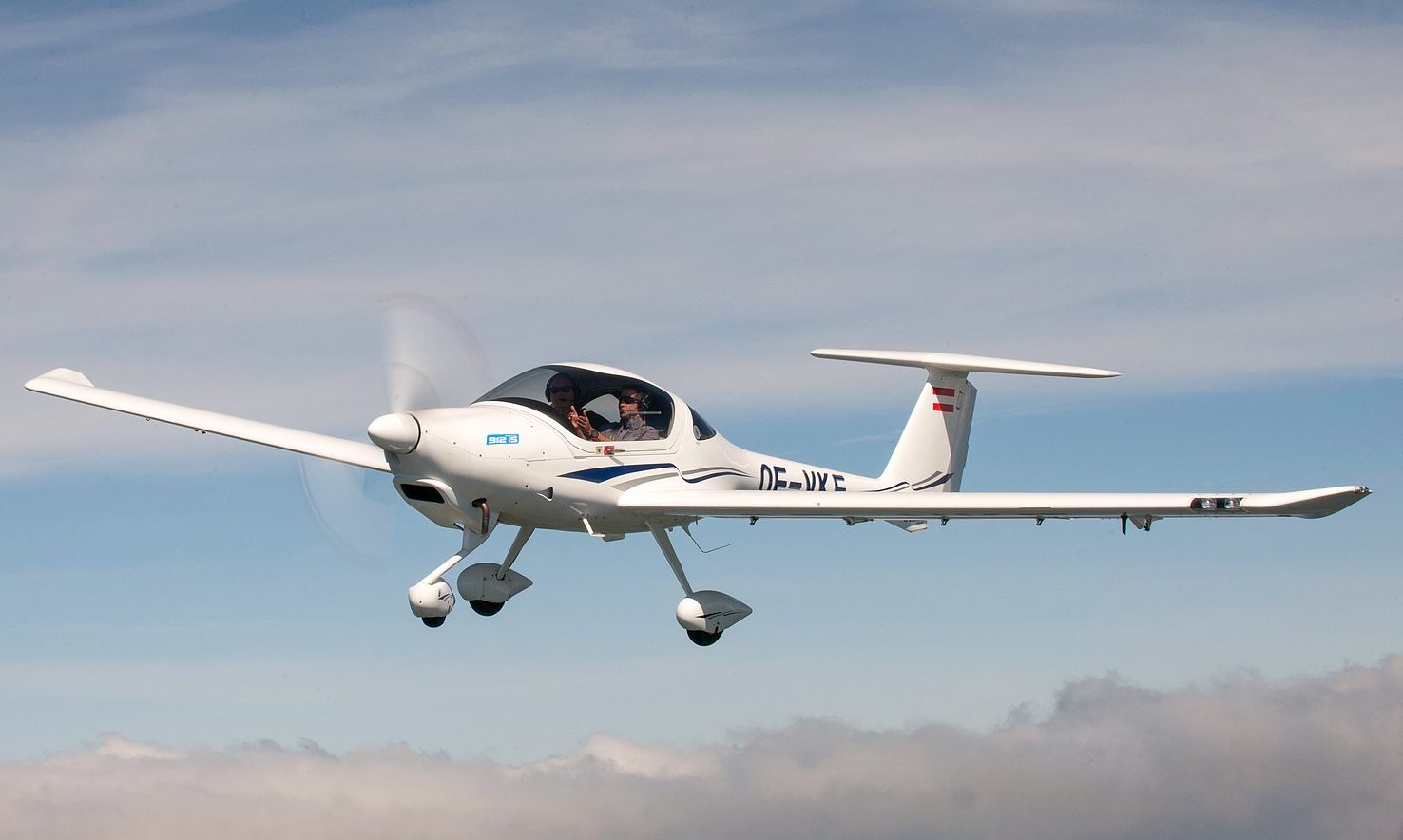
The C1 Eclipse uses the fuel injected 125 hp Continental IO-240-B32B engine which is sufficiently powerful and efficient, burning around 23 liters per hour at 75% power. (Not be mistaken for the underpowered Rotax 912 version of the DA20 called the A1 Katana)
The C1 Eclipse cruises around the 120 knot range, similar to its 4 seater sister, the DA40. Climb speed is a respectable 900 fpm and range is just under 1000 km at economy cruise.
A lot of effort has been put in to make it an impressive trainer. Thanks to well designed slotted flaps, stall speed is a mind boggling 34 knots. Its large authoritative rudder enables a maximum demonstrated crosswind of 20 knots (5 knots higher than a 152)
The aircraft flies under EASA’s CS-VLA certification which is a category up to 750 kg. An exception is granted to allow the aircraft to have a MTOW 800 kg with specific propellor configurations.Empty weight is a whopping 525 kg (35 kg greater than a Cessna 152). Useful load is 275 kg which after full fuel (91 litres), leaves 209.5 kg for people and luggage.
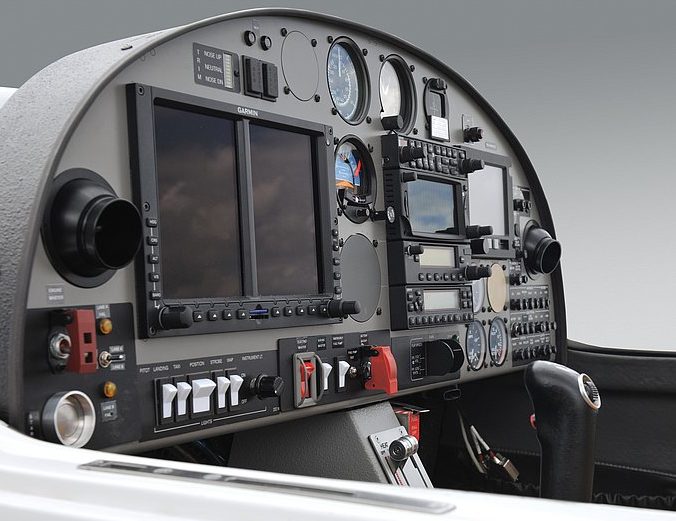
Expect a very nice G500 glass cockpit in new models accompanied by some steam backup instruments. The seats are leather and fixed in position (rudder pedals are adjustable).
The bubble canopy affords excellent visibility and the cockpit while not hugely spacious is still adequate.
Base new price for the aircraft is €185,000 but by the time a Glass cockpit is installed expect it to be closer to €230,000.
Second hand prices are around the €145,000 mark.
(Here is the Type Certificate and POH)
4. Flight Design – CTLSi (Certified CS-LSA)
The Flight Design CTLSi is an EASA certified trainer and cross country tourer. While not the most exciting plane in this lineup, it certainly is well built, ergonomic, and cheap to operate. The manufacturer has successfully produced an estimated 2000 aircraft.
This German-designed, Ukrainian factory-built high wing composite aircraft is best known for its ultra-comfortable cabin and Cessna-like handling characteristics.
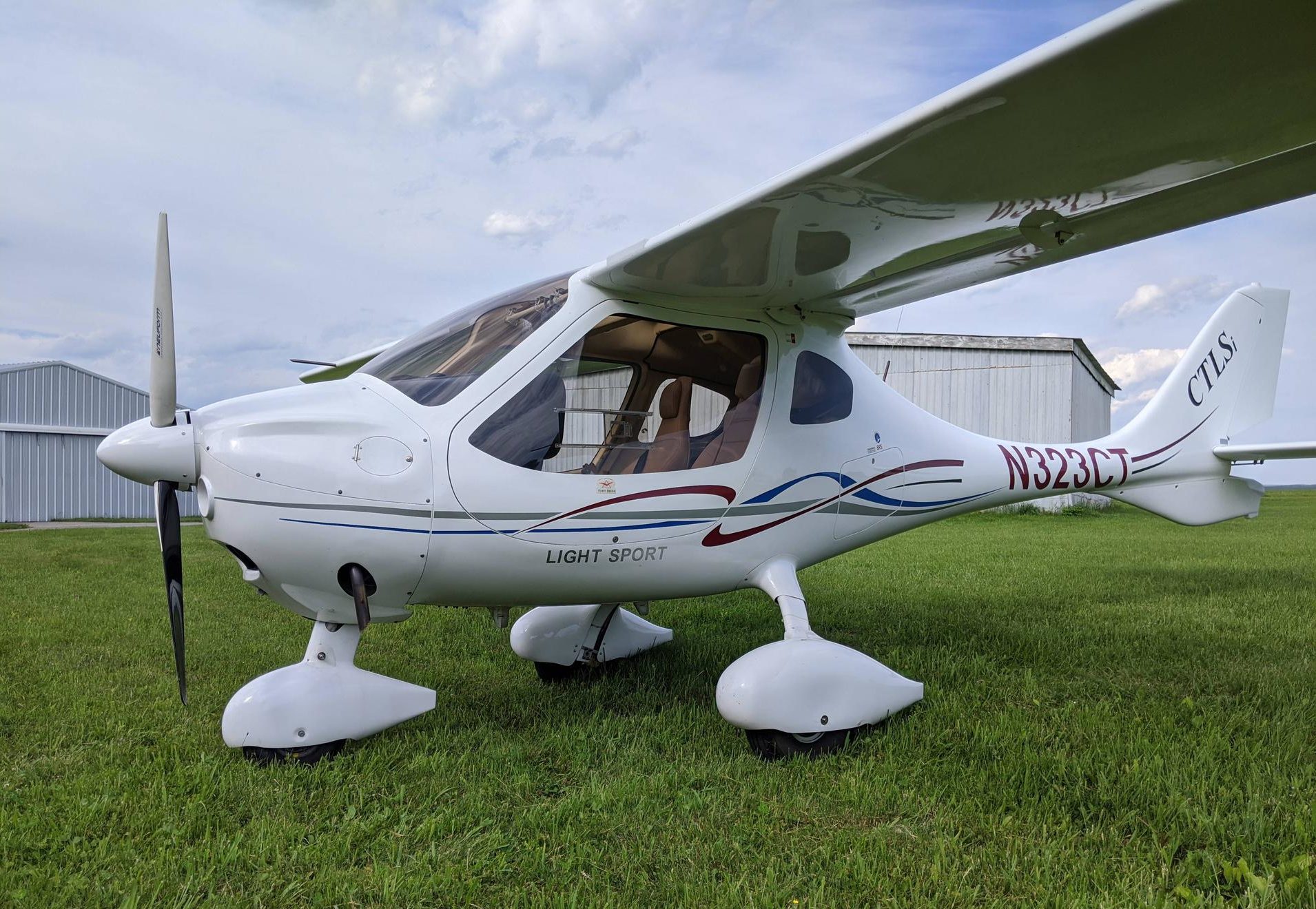
The engine is mounted into the fuselage, giving it a stubby looking nose and egg shaped body. The plane has no wing struts which give it good visibility and better aerodynamics. While not as aerodynamic as the Virus SW, it still pushes out a respectable 112 knots cruise speed.
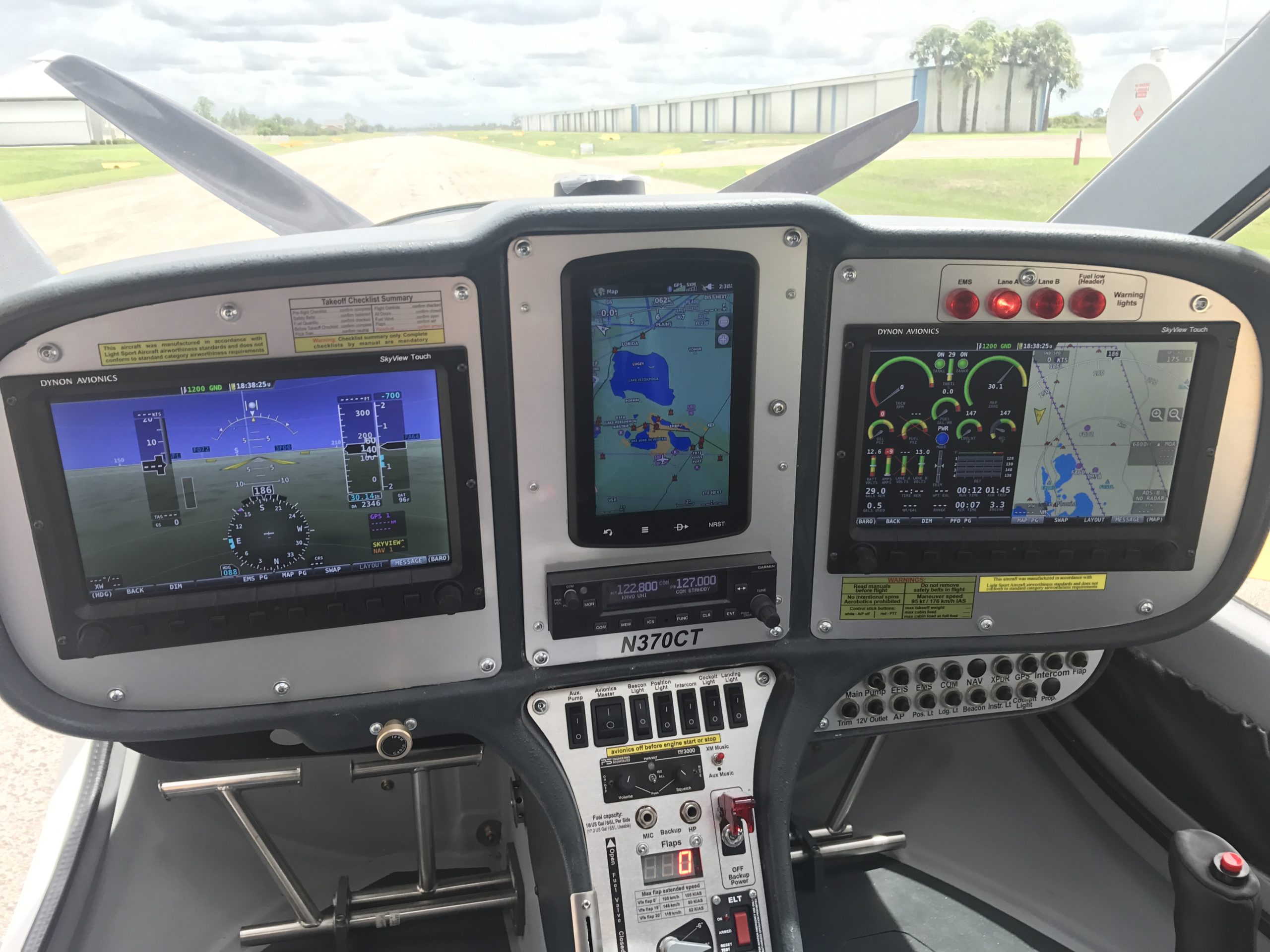
The cabin is 1.24 meters wide which is the same as a Cessna 182. It comes with leather seats and ample luggage storage behind them.
There is room on the panel for 2 Dynon 10 inch displays or Garmin equipment if you prefer. A BRS parachute comes as standard equipment.
The aircraft is fitted with unusually large 130L tanks, giving an endurance of 6.5 hours, and a range of 1348 km.
Empty weight for the aircraft is 324 kg. With full fuel that would leave 183 Kg for people and luggage which is sort of doable.
The purchase price for the aircraft new is around €175,000. Second-hand models hover close to €90,000. (Type certificate here, Link to POH)
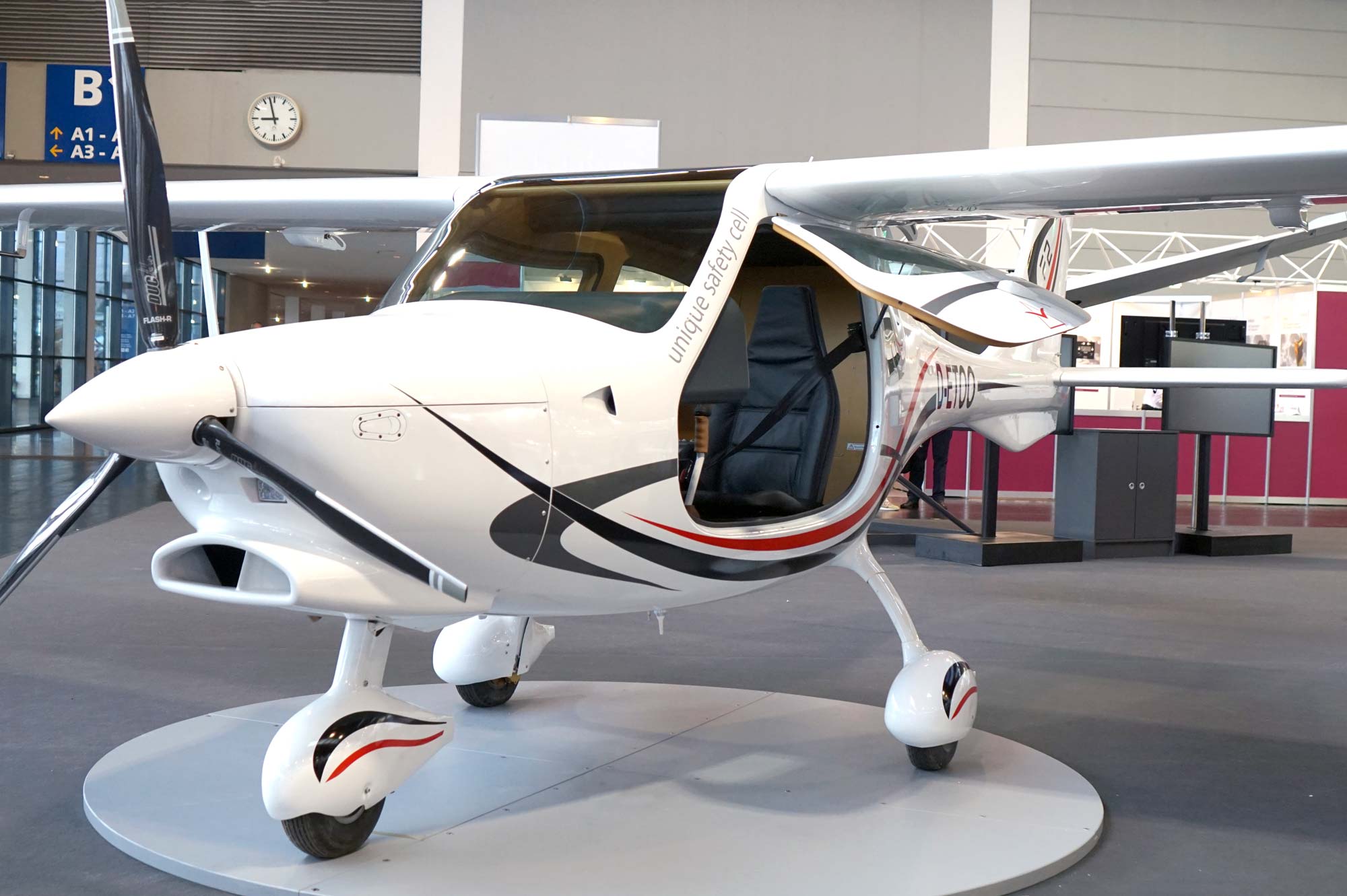 Side note: Flight Design is working on a new aircraft called the F2 which they plan to certify under the CS-23 certification. They are lengthening the fuselage and getting rid of the Pug-like nose. The wing has a DLE outer wing to prevent spins and lessen the sudden onset of stalls. It will come with a 141 HP Rotax 915 iS. Pricing for this aircraft will be close to the €250K mark. They plan to use the same design to later introduce a 4 seater called the F4 (interesting video on the aircraft)
Side note: Flight Design is working on a new aircraft called the F2 which they plan to certify under the CS-23 certification. They are lengthening the fuselage and getting rid of the Pug-like nose. The wing has a DLE outer wing to prevent spins and lessen the sudden onset of stalls. It will come with a 141 HP Rotax 915 iS. Pricing for this aircraft will be close to the €250K mark. They plan to use the same design to later introduce a 4 seater called the F4 (interesting video on the aircraft)
The company has struggled with liquidity in the past like most GA producers so it will be interesting to see if they are able to pull it off.
5. Aerospool – WT9 Dynamic LSA (Certified CS-LSA)
The WT9 Dynamic LSA is a Slovak made low wing Rotax 912ULS powered aircraft. It is CS-LSA certified in Europe and comes in either a Standard or Tow version. The Tow version uses a constant speed propellor which gives it some performance benefits in both climb and cruise performance.
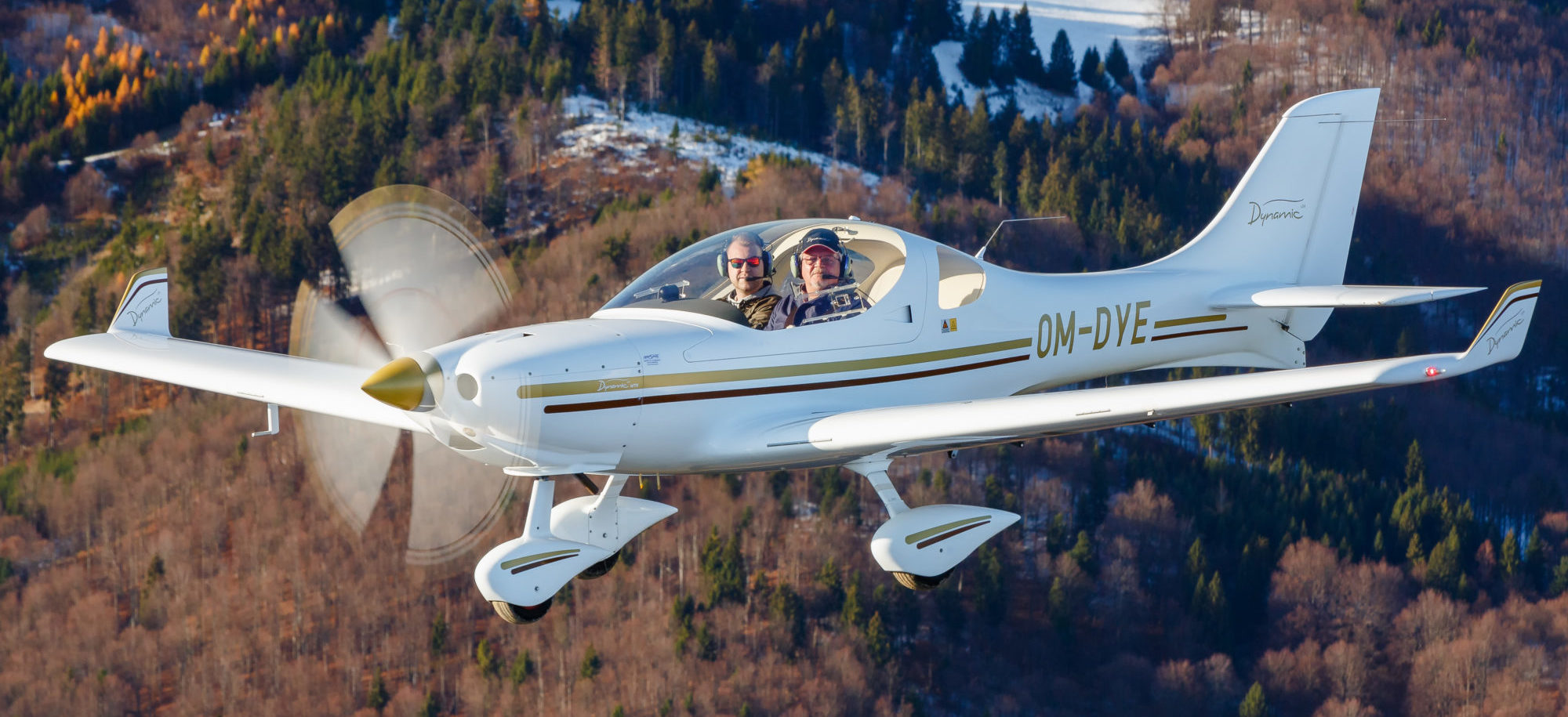 The Dynamic WT9 is made of Carbon Fibre sandwich construction, making it the lightest plane on the list, with an empty weight of 299 kg.
The Dynamic WT9 is made of Carbon Fibre sandwich construction, making it the lightest plane on the list, with an empty weight of 299 kg.
Fuel tanks in the aircraft are 126 litres (119 usable) giving an endurance of just under 6.5 hours at standard cruise of 111 knots while burning 18.5 litres per hour. If you are willing to burn a bit more fuel the aircraft will cruise at 120 knots.
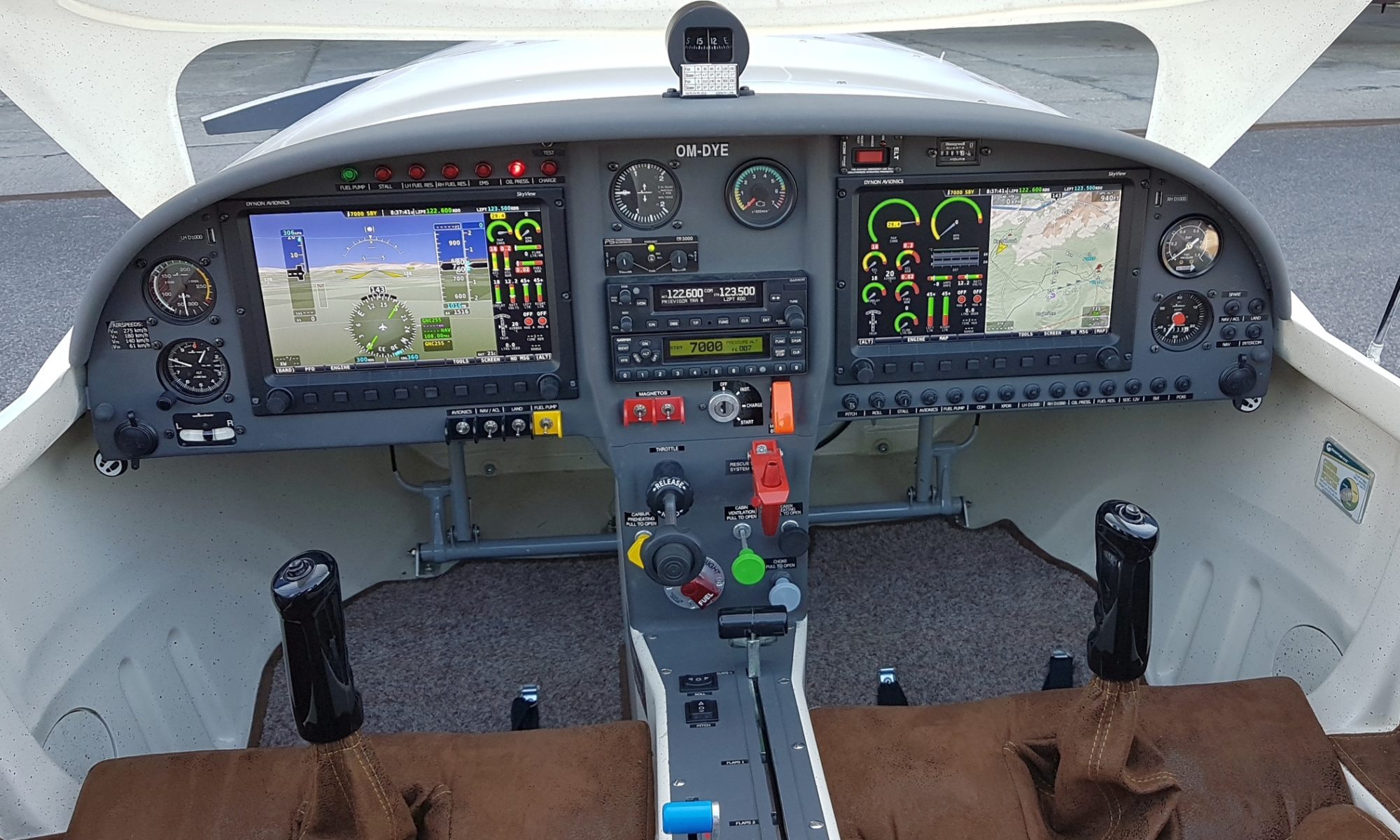
The instrument panel uses a modern Dynon 10 inch glass cockpit.
Flaps are deployed using a manual slider (black knob) and trim is adjusted using a similar mechanism (blue knob).
According to the manufacturer, there are more than 750 of the aircraft flying around the world.
The current selling price for the aircraft is €186,000. Second-hand aircraft are selling for upwards of €100,000.
Here is a link to the Type certificate.
6. Kitfox – Series 7 (Experimental)
If you are willing to trade speed for versatility, it doesn’t get much better than a Kitfox Series 7. These aircraft are kit built and can be certified as experimental aircraft. With the STi STOL wing, take-off roll is is just 45 meters with a climb rate of 1800 fpm. Stall speed is a mere 27 knots (51 km/h).
Expect 85 – 90 knots cruise speed. If more speed is needed then opt out of the STi STOL wing to get 95 – 100 knots, but at the detriment of a slightly longer take-off roll (88 meters), climb rate (1000 fpm) and stall speed (36 knots).
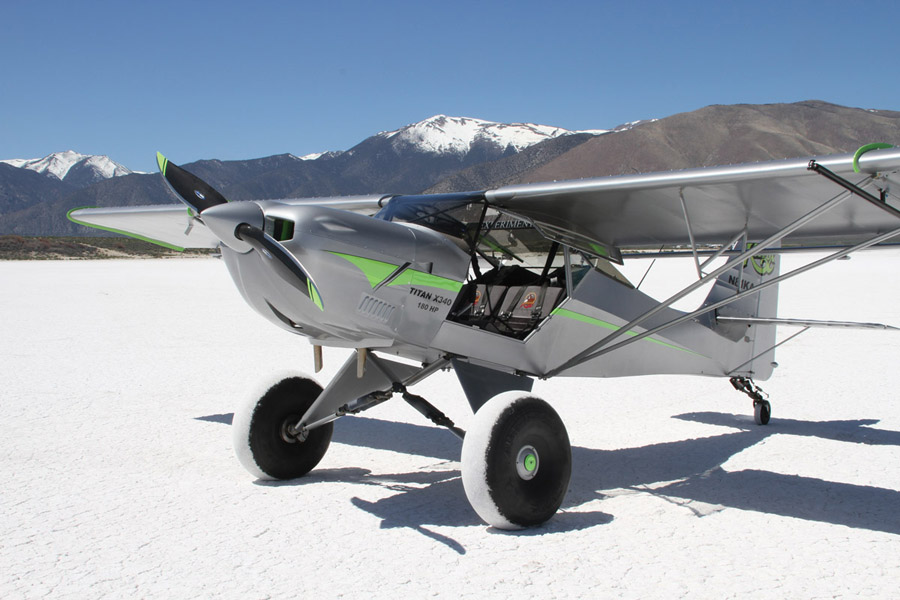
There are several engine options ranging from 80 hp up to 180 hp. The most popular engine is the 100 hp Rotax 912 ULS. The 180 hp Titan engine in the aircraft pictured above is probably overkill and cuts quite deep into the useful load. The 140 hp Rotax 915iS would be a good choice at almost half the weight.
The Kitfox Series 7 can be approved up to 700 kg but it is usually flown in the 600 kg weight class. Wings are foldable making storage in the garage possible.
These aircraft are very hard to come by second hand but usually sell for around €50,000. Building one new will cost around €100,000 and 1000 hours of your time. Factory built they sell for €165,000 plus tax.
7. Cruise Aircraft – PS-28 Cruiser (Certified CS-LSA)
This aircraft is a popular modern trainer used by clubs and flight schools. It has a lovely glass cockpit and runs a Rotax engine, making it a good economical choice. It is however heavy and slow due to its all-metal construction.
Produced by Cruiser Aircraft out of the Czech Republic, the PS-28 comes as an EASA CS-LSA certified aircraft. The design was first introduced in 2006 and was briefly marketed by Piper as the PiperSport in 2010.
Empty weight is 388 kg, leaving only 212 kg for passengers and fuel. Cruise speed is a mere 93 knots, on par with your grandpa’s Cessna 150. While it may not be faster than the old Cessna it will certainly look a lot more sexy.
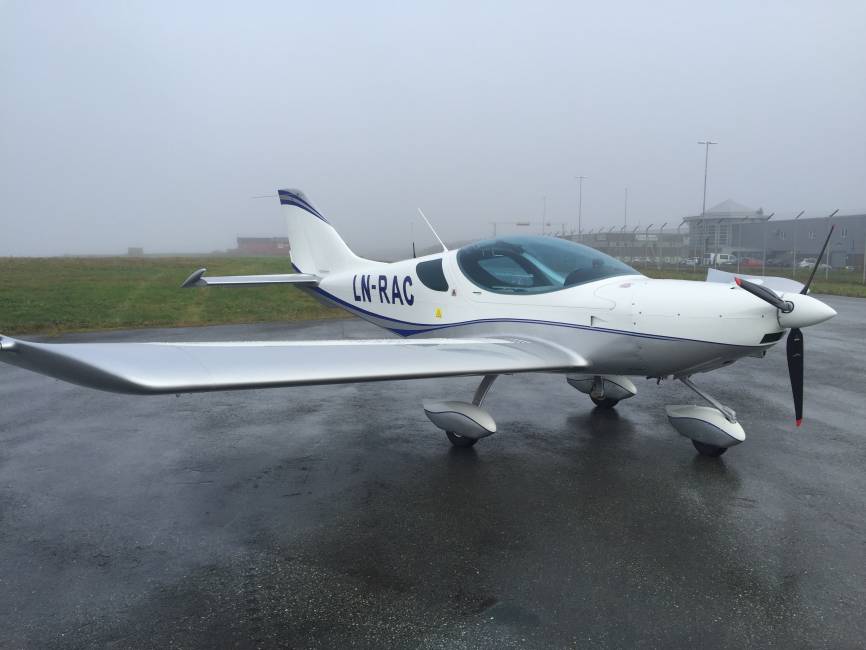
 The aircraft is powered by a Rotax 912 ULS carburetted 100 HP engine. Fuel consumption is around the normal 18L/hour.
The aircraft is powered by a Rotax 912 ULS carburetted 100 HP engine. Fuel consumption is around the normal 18L/hour.
The instrument panel consists of 2 Dynon SkyView SV-D1000 MFD screens with built-in GPS and engine monitoring. There is an option to include a Ballistic Parachute Recovery System.
The new price for this aircraft is close to €150,000. Second hand, versions from around 2010 can be picked up for between €50K – €85K.
8. BRISTELL – B23 (Certified CS-23)
Similar to the P-28 Cruiser, the Bristell B23 is also a Rotax powered all-metal low wing aircraft built in the Czech Republic. It has a similar instrument package but uses Garmin equipment instead of Dynon.
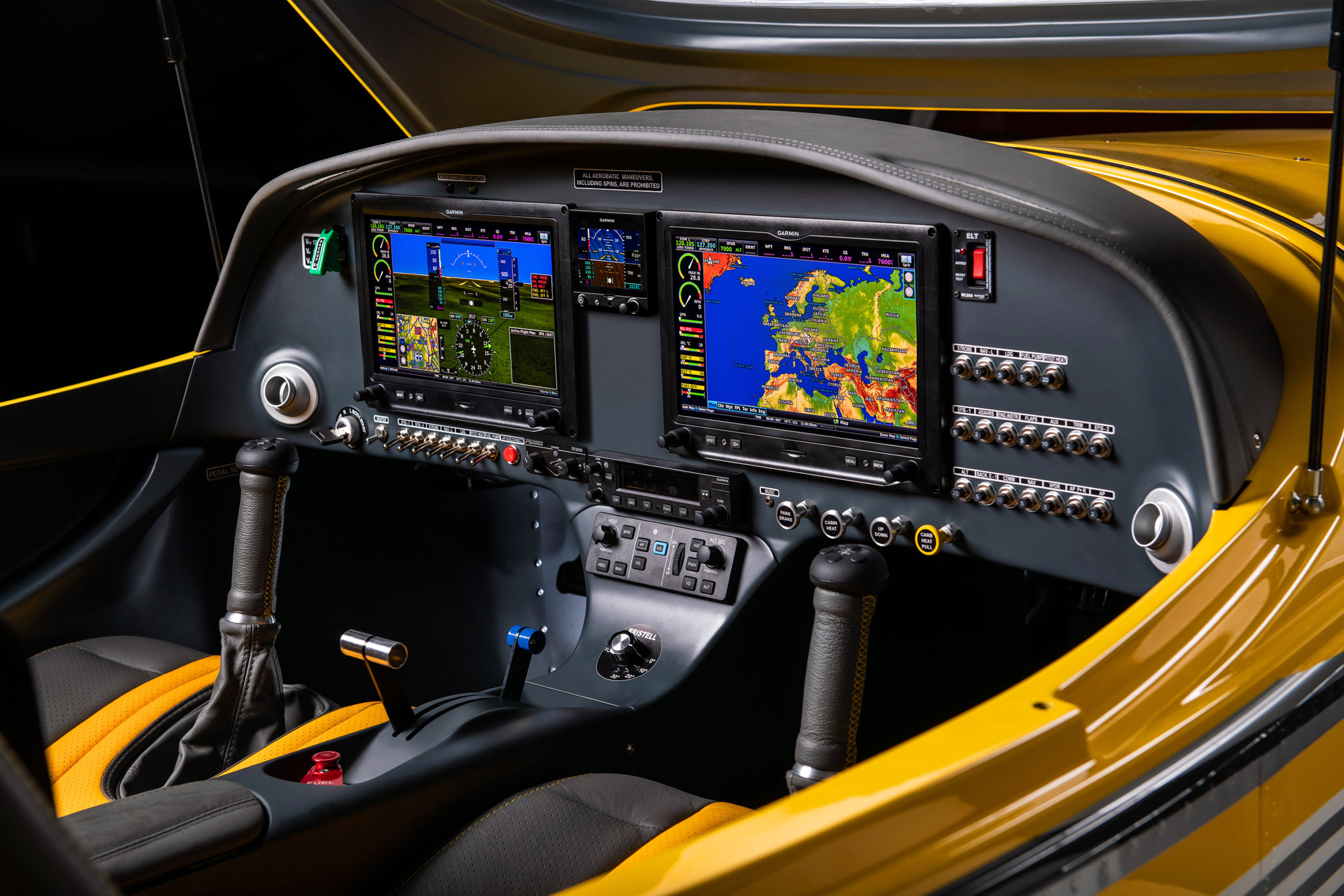
What is different is the certification and aircraft weights. The Bristell B23 was built to comply with EASA CS-23 certification (U.S FAR 23) which is the traditional certification that GA aircraft like Piper and Cessna use, MTOW <5670 kg. It has an empty weight of 435 kg and an MTOW of 750 kg, giving it a decent useful load of 315 kg.
Like the Diamond DA20 A1 Katana briefly mentioned above though it is somewhat underpowered with a Rotax 912 ULS and would benefit from a more powerful engine like the 140 hp Rotax 915iS if Rotax ever get around to certifying it.
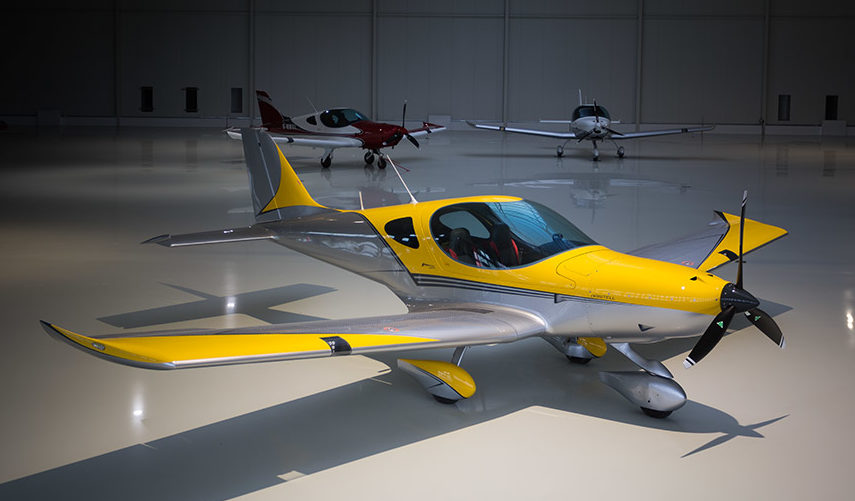 The BS23 has 120L fuel tanks which when filled give an endurance of 6 hours plus 45 min reserve, and a range of 1240 km.
The BS23 has 120L fuel tanks which when filled give an endurance of 6 hours plus 45 min reserve, and a range of 1240 km.
Minus the 86 kg for full tanks, it leaves a decent 229 kg for passengers and luggage. There are two wing luggage compartments which can carry 20 kg each.
Cruise speed in the aircraft is listed at a modest 112 knots (207 km/hour). Climb rate is around 700 fpm at sea level which is what you see in most Cessna trainers.
The BR23 is Night VFR certified and can be upgraded to full IFR certified.
The starting price for this aircraft is around €199,000. As this model is new there are currently no second-hand ones on the market.
Aircraft that didn’t make the list
I haven’t bothered to add the traditional Cessna 140, 150, 152 or Piper equivalents as they are dated, heavy and not that fuel efficient. Having said that though they still do deserve a place in the hall of fame as they have been highly reliable and trained most of the pilots that are flying today.
From the modern LSA aircraft I also didn’t include the Evektor as it is all metal and ugly with its big bubble canopy.